Platinum market deficit boosted by tariff-linked exchange stock movements that are unlikely to unwind anytime soon
28 March 2025
The fear that tariffs will result in platinum being unavailable in the US at current prices has resulted in a steepening of the forward curve and significant inflows into NYMEX approved warehouses. Whilst trade tensions persist, we expect exchange stocks to remain elevated, but if tensions ease, only with material exchange stock outflows from current levels would the forecast 2025 deficit of 848 koz begin to reduce.
Tariff fears have distorted metals markets resulting in a rush of imports into the US ahead of them being enacted. The visible flows in platinum can be seen in NYMEX exchange stocks, which have risen by 460 koz since mid-December 2024 (+225%), which will for the most part be associated with short positions that look to capitalise on the significant increase in the Exchange for Physical (EFP) rate (fig 1). The EFP is the price difference between futures prices and the spot price, which, when it is large enough, creates an arbirtrage opportunity to be long in the prompt market and short in the futures. This peaked at an implied US$75/oz in the three month futures back in January at a time when a three month platinum lease would have cost US$60/oz before any credit spread. The steepness in the NYMEX forward curve (fig 3) that is driving the EFP opportunity likely reflects market concerns that tariffs may mean that platinum is unavailable in the US at current prices in one, three, six months etc. Buying a future today hedges some of that risk. Whilst flows into NYMEX approved warehouses are visible and likely most associated with the elevated EFP, it is likely that there has been an additional flow of material that has gone directlly to end users.
Figure 1. The elevated EFP has driven a major increase in exchange stocks
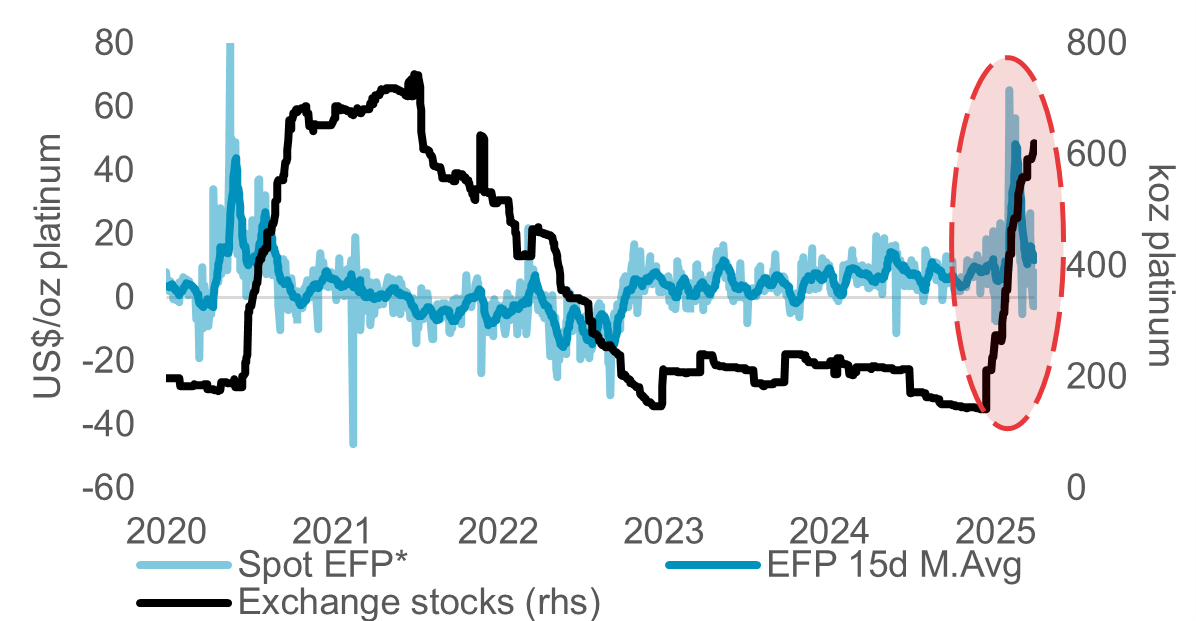
Figure 2. Without a significant unwinding of exchange stocks, the 2025 deficit will be deeper than currently forecast
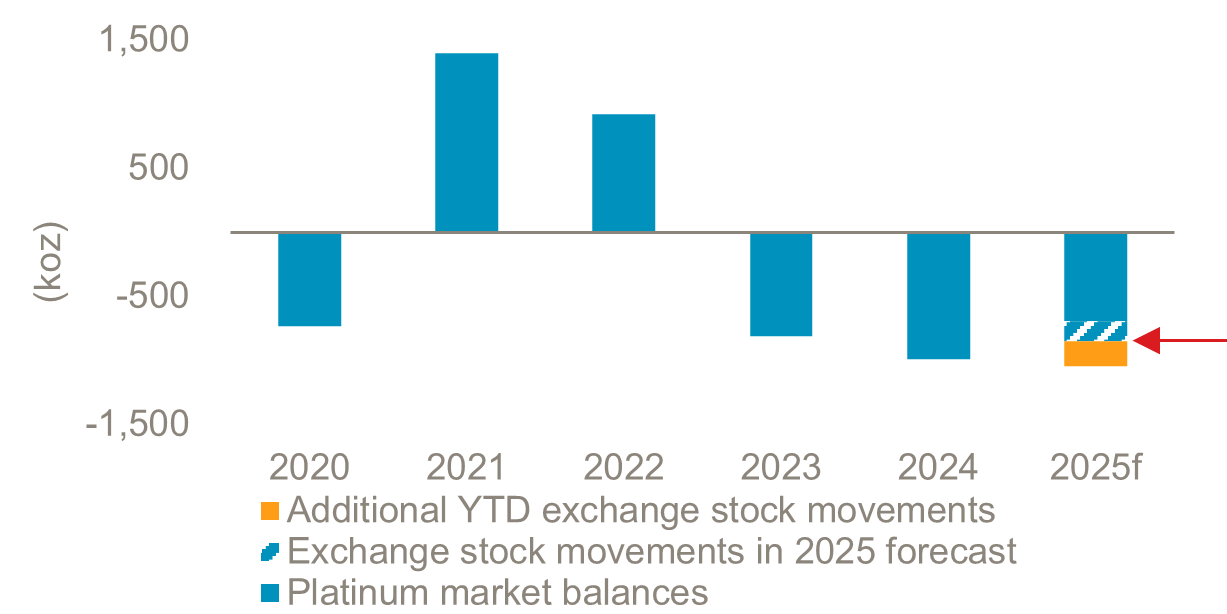
We include exchange stock movements within investment flows, exchange stock inflows increase net demand, and outflows reduce net demand. For example, significant exchange stock inflows during COVID made a major contribution to the deficit in 2020 and subsequent outflows to the surpluses of 2021/22. Note that despite the recent inflows, exchange stocks remain 140 koz below their COVID peak, and the post COVID unwind only occurred as international transportation constraints eased. Clearly, what happens to exchange stocks through the rest of this year has a bearing on the supply/demand balance. Our 2025 deficit of 848 koz includes 150 koz of exchange stock inflows, whereas 328 koz has flown into warehouses year-to-date. Our estimated deficit therefore requires exchange stock outflows of 178 koz, which will only occur when there is certainty regarding platinum tariff risks (fig. 2). If anything, the growing intergovernmental rift between the Trump administration and South Africa is only likely to maintain PGM supply risk fears. As a closing comment, it is worth noting that the US is almost self-sufficient when it comes to palladium, whereas it is very short platinum (fig. 6) and this is clearly evident in the relative lease rates and exchange stock movements (figs. 7 and 8) with platinum clearly much tighter than palladium.
Platinum’s attraction as an investment asset arises from:
- WPIC research indicates that the platinum market entered a period of consecutive supply deficits from 2023 and these are expected to fully deplete above ground stocks by 2029f
- Platinum supply remains challenged, both in terms of primary mining and secondary recycling supply
- Trade tensions are distorting market flows and accelerating market tightening
- Platinum is a critical mineral in the global energy transition underpinning a key role in the hydrogen economy
- The platinum price remains historically undervalued and significantly below the price of gold
Figure 3: The steeper forward curve relative to lease rates is driving the EFP and NYMEX flows. The 1 month backwardation shows tightness in the spot market.
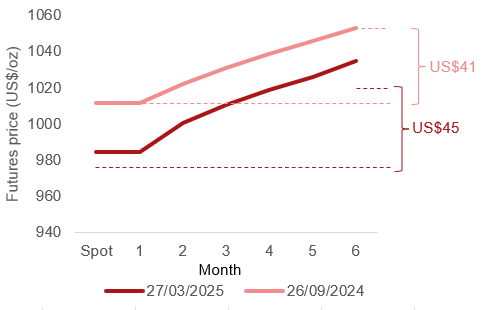
Figure 4: Net managed money positions have remained cyclical with no clear directional shift in response to heightened EFP volatility
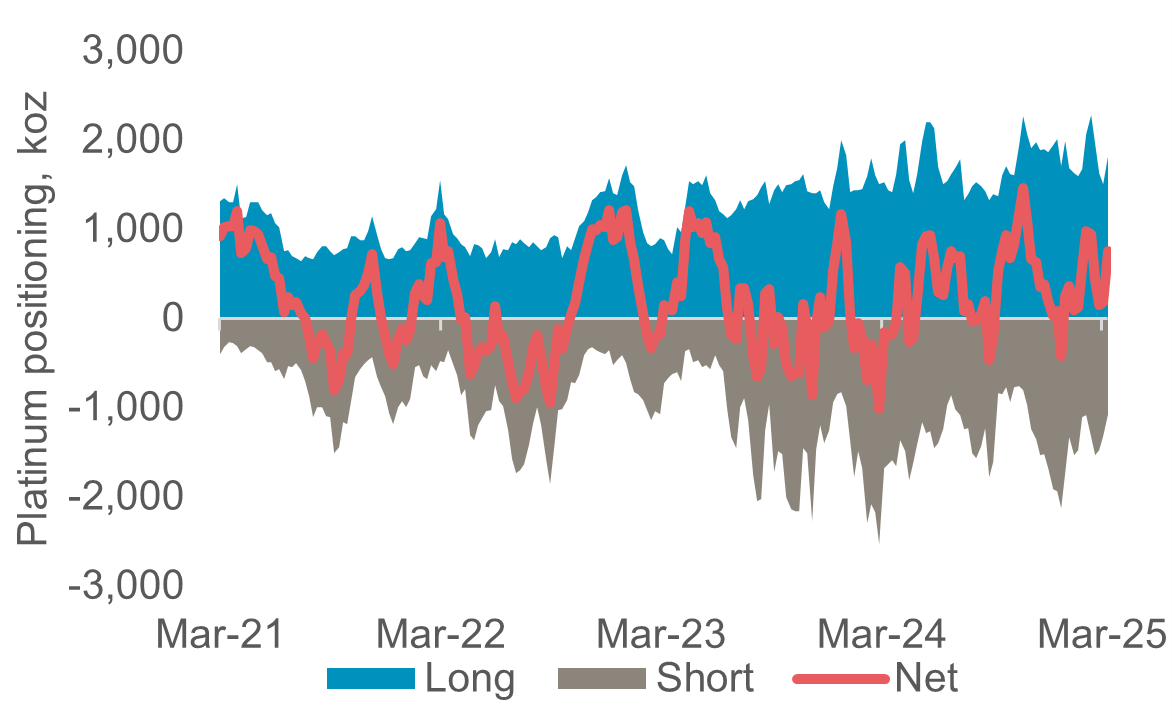
Figure 5: Exchange stocks movements are captured in our Pt market forecasts, within investment demand
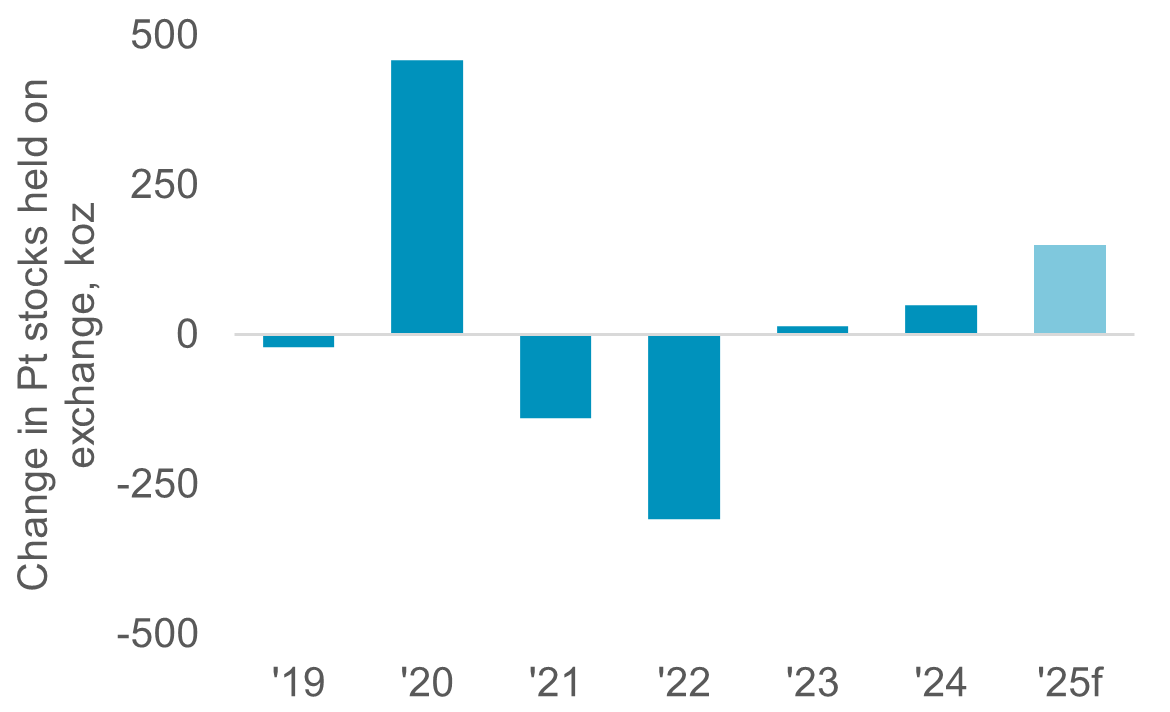
Figure 6: Domestically, the US is almost self-sufficient in palladium but very short platinum

Figure 7: The stronger reaction in platinum lease rates reflects more acute market tightness than for palladium
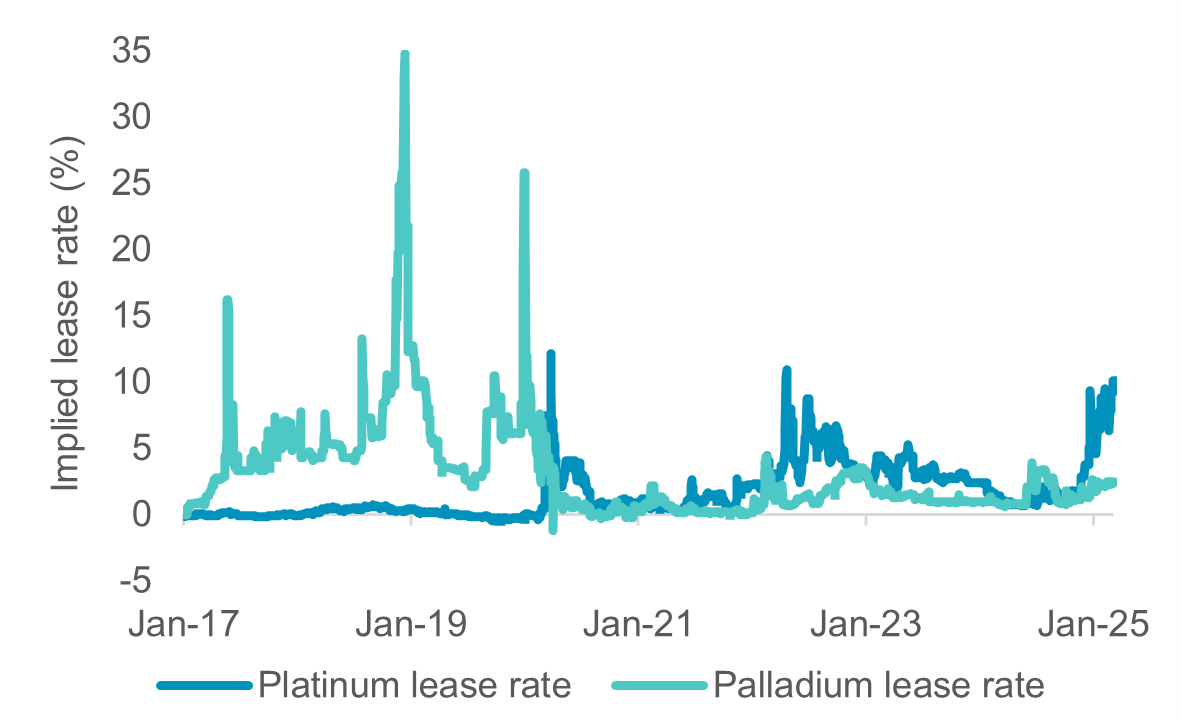
Figure 8: Platinum exchange stocks have accordingly risen by more than palladium on a relative basis
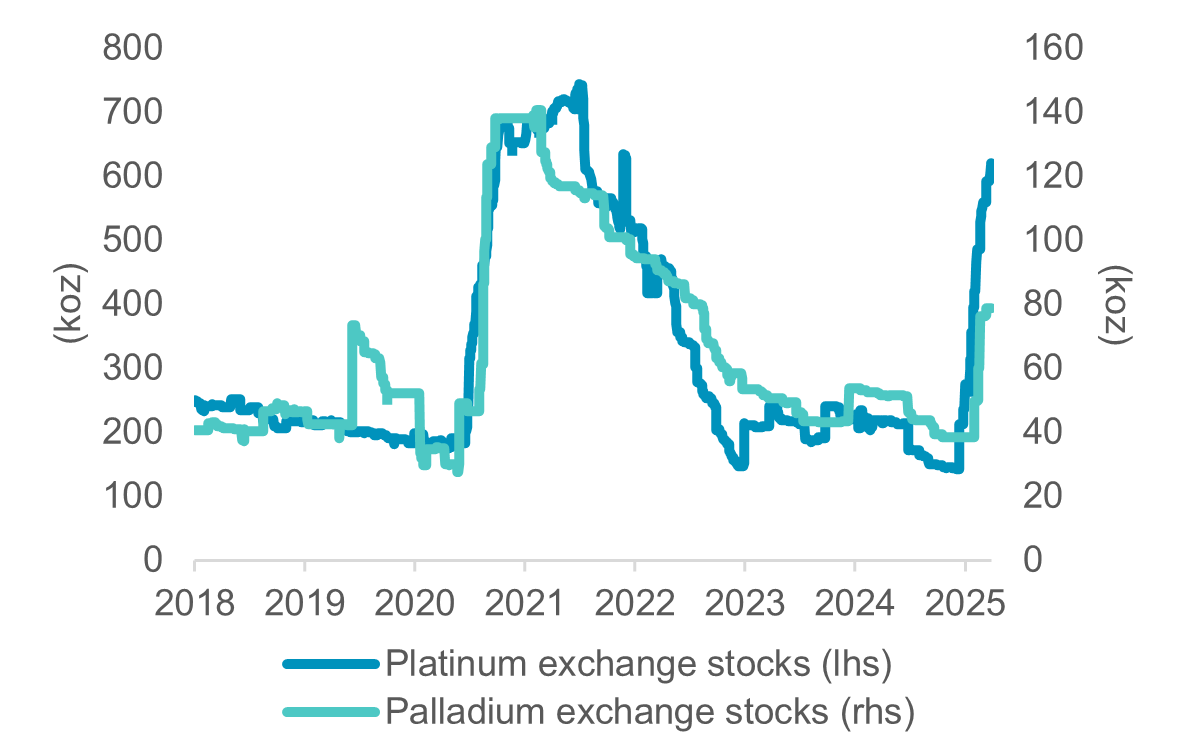
IMPORTANT NOTICE AND DISCLAIMER: This publication is general and solely for educational purposes. The publisher, The World Platinum Investment Council, has been formed by the world’s leading platinum producers to develop the market for platinum investment demand. Its mission is to stimulate investor demand for physical platinum through both actionable insights and targeted development: providing investors with the information to support informed decisions regarding platinum; working with financial institutions and market participants to develop products and channels that investors need.
This publication is not, and should not be construed to be, an offer to sell or a solicitation of an offer to buy any security. With this publication, the publisher does not intend to transmit any order for, arrange for, advise on, act as agent in relation to, or otherwise facilitate any transaction involving securities or commodities regardless of whether such are otherwise referenced in it. This publication is not intended to provide tax, legal, or investment advice and nothing in it should be construed as a recommendation to buy, sell, or hold any investment or security or to engage in any investment strategy or transaction. The publisher is not, and does not purport to be, a broker-dealer, a registered investment advisor, or otherwise registered under the laws of the United States or the United Kingdom, including under the Financial Services and Markets Act 2000 or Senior Managers and Certifications Regime or by the Financial Conduct Authority.
This publication is not, and should not be construed to be, personalized investment advice directed to or appropriate for any particular investor. Any investment should be made only after consulting a professional investment advisor. You are solely responsible for determining whether any investment, investment strategy, security or related transaction is appropriate for you based on your investment objectives, financial circumstances and risk tolerance. You should consult your business, legal, tax or accounting advisors regarding your specific business, legal or tax situation or circumstances.
The information on which this publication is based is believed to be reliable. Nevertheless, the publisher cannot guarantee the accuracy or completeness of the information. This publication contains forward-looking statements, including statements regarding expected continual growth of the industry. The publisher notes that statements contained in the publication that look forward in time, which include everything other than historical information, involve risks and uncertainties that may affect actual results. The logos, services marks and trademarks of the World Platinum Investment Council are owned exclusively by it. All other trademarks used in this publication are the property of their respective trademark holders. The publisher is not affiliated, connected, or associated with, and is not sponsored, approved, or originated by, the trademark holders unless otherwise stated. No claim is made by the publisher to any rights in any third-party trademarks
WPIC Research MiFID II Status
The World Platinum Investment Council -WPIC- has undertaken an internal and external review of its content and services for MiFID II. As a result, WPIC highlights the following to the recipients of its research services, and their Compliance/Legal departments:
WPIC research content falls clearly within the Minor Non-Monetary Benefit Category and can continue to be consumed by all asset managers free of charge. WPIC research can be freely shared across investment organisations.
- WPIC does not conduct any financial instrument execution business. WPIC does not have any market making, sales trading, trading or share dealing activity. (No possible inducement).
- WPIC content is disseminated widely and made available to all interested parties through a range of different channels, therefore qualifying as a “Minor Non-Monetary Benefit” under MiFID II (ESMA/FCA/AMF). WPIC research is made freely available through the WPIC website. WPIC does not have any permissioning requirements on research aggregation platforms.
- WPIC does not, and will not seek, any payment from consumers of our research services. WPIC makes it clear to institutional investors that it does not seek payment from them for our freely available content.
More detailed information is available on the WPIC website:
https://www.platinuminvestment.com/investment-research/mifid-ii
Contacts:
Edward Sterck, Research, [email protected]
Wade Napier, Research, [email protected]
Kaitlin Fitzpatrick-Spacey, Research, [email protected]
Brendan Clifford, Head of Institutional Distribution, [email protected]
WPIC does not provide investment advice.
Please see disclaimer for more information.
